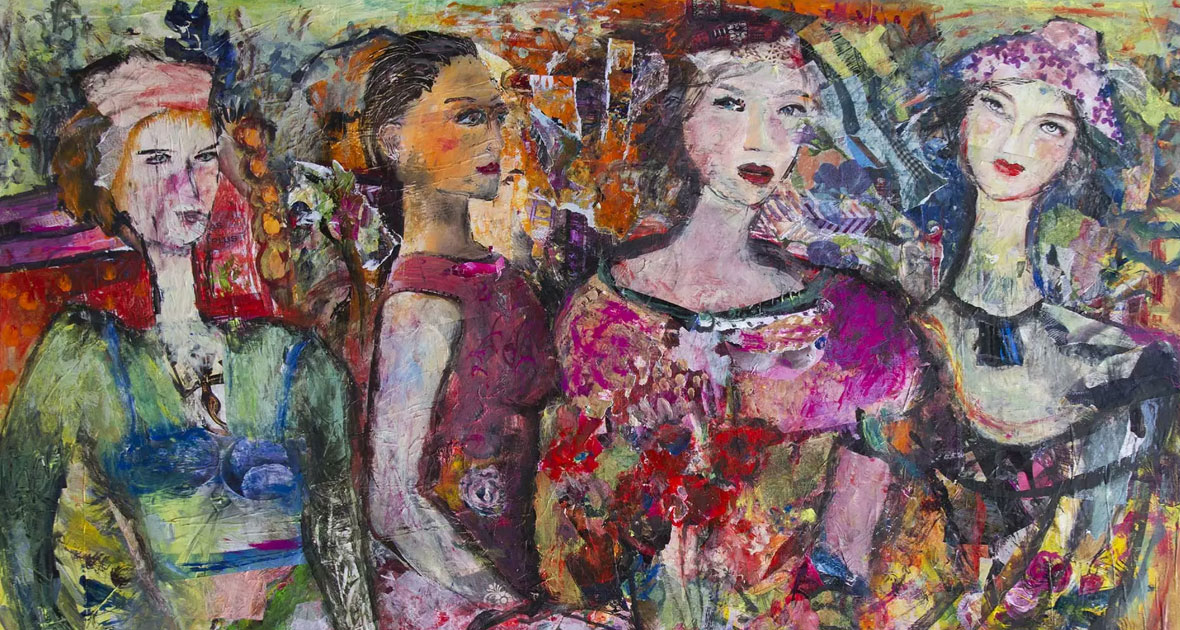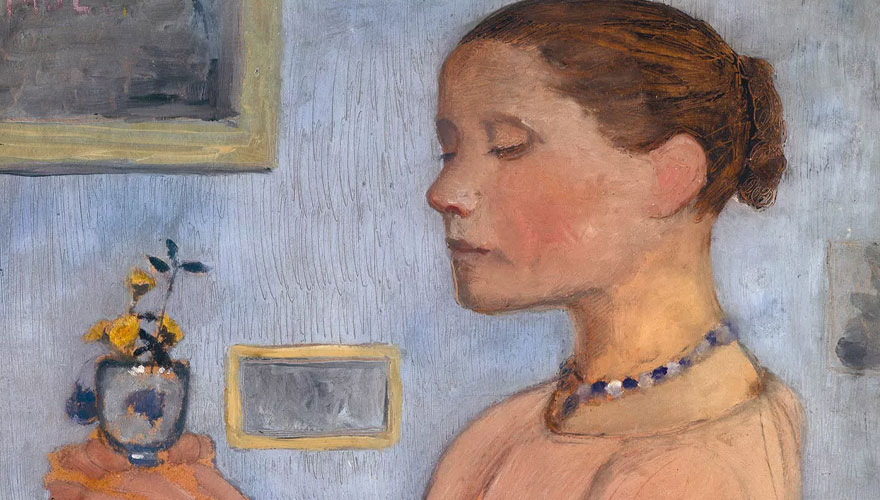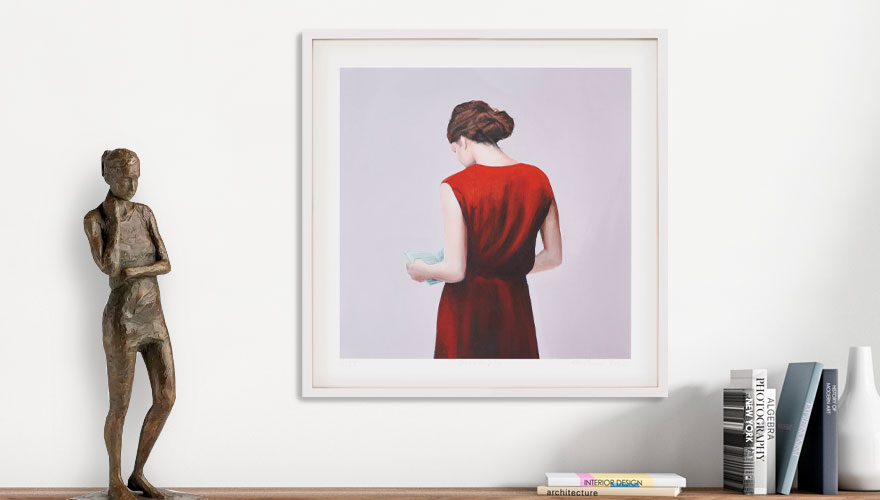
Women in Art: Barriers and the Desire for Equality
The history of art encompasses a diverse range of talents, yet the contributions of women often linger in the shadows of their male counterparts - unnoticed, overlooked or underestimated. Female artists were even derogatorily labelled in German as "Malweiber" (Painting women) until the 19th century. Even today, art by women receives less attention, despite the fact that there have always been strong women in art with extraordinary artistic ability and creativity.
A Journey Through the Epochs
15th and 16th-Century
In the Renaissance, women were encouraged to paint as it was considered desirable for women to be skilled in art. Although the Renaissance marked the first epoch in which a few female artists gained international recognition, most women's artistic contributions often remained unknown and were rarely acknowledged.
The Renaissance brought about a change in art, expecting artists to possess knowledge of mathematics or the human body, among other things. The study of the human body, for example, required working with male nudes. Artists acquired these new skills in art academies. However, women were denied access to art academies, leading to the exclusion of many talented women and their work being unduly recognised.
A long struggle by women for an academic art education began, which was only partially resolved in the 20th century. These systematic exclusions significantly contributed to the fading recognition of many talented Renaissance female artists, as they succumbed to patriarchal structures and chose not to pursue artistic careers.
Art by Women in the 17th and 18th-Century
With the beginning of the Baroque epoch and the subsequent transition to the Enlightenment, a change can be observed. Despite significant challenges, some women in the arts managed to establish themselves in creative circles. One example is the artist Judith Leyster, who worked in the 17th century alongside the Dutch master Frans Hals. Their works were of similar style. Although Leyster was highly regarded during her lifetime, her art disappeared into obscurity after her death, only to resurface when it was discovered that seven of her paintings had been mistakenly attributed to Frans Hals. It was not until 1893 that the Louvre discovered the Judith Leyster monogram on a picture under the false signature of Frans Hals.
19th Century and First Changes
In the 19th century, women were still partially denied access to art academies and professional networks, so they had to learn their craft in private lessons. The London Royal Academy of Art, for example, opened its doors to women as early as 1860, when the artist Laura Herford was accidentally accepted after submitting works signed only with her initials LH rather than her full name. However, women were not accepted as art students in Germany until 1919.
This exclusion of women from educational opportunities meant that they were often excluded or forgotten by art movements. One example of this is the Bauhaus. Although more women than men enrolled at the Bauhaus in Weimar in 1919, and the founder Walter Gropius claimed that there were "no differences between the beautiful and the strong sex", very few female Bauhaus artists became famous, and many were forgotten.

Women in Art: Pioneers of Modernism
The challenges for women artists continued into the modern era. With the emergence of modern art movements in the 19th and 20th centuries, strong women in art increasingly began to come to the fore. Female artists such as the expressionist Paula Modersohn-Becker dared to break new ground and challenge the traditional norms of art. In 1906, for example, she created self-portraits that are considered to be the first nude self-portraits in art history.
During this time, many other female artists also began to rise up against the existing barriers. The demand for equal rights and the search for individual artistic identity became central themes and ultimately led to a feminist art movement.
Feminist Art Movement
The late 1960s and 1970s marked a turning point for women in art with the beginning of the feminist art movement. The feminist art movement arose as a direct response to the underrepresentation of women in galleries and museums and the deeply rooted gender stereotypes in the art world. Many feminist artists and art historians devoted themselves intensively to the role of women in the Western art world.
A particularly influential essay for the feminist art movement was Linda Nochlin's publication "Why Have There Been No Great Women Artists?", published in 1971. In her essay, Nochlin analysed for the first time the institutional barriers that have prevented women in the Western context from achieving similar success in the visual arts compared to their male counterparts.
Frida Kahlo as a Feminist Icon
Frida Kahlo, one of the most influential artists of the 20th century, made a unique contribution to art history with her symbol-laden self-portraits and is now considered a symbol of feminism. Her works not only reflect her personal experiences and pain but also critically engage with themes such as identity and the human body. She liberated herself from the social constraints of her time and was considered a rebel.
During her lifetime, Kahlo was often seen merely as the woman next to Diego Rivera, a well-known Mexican painter. As is so often the case, it was only after her death in 1954 that she and her work were recognised as being of particular importance. Today, Frida Kahlo is not only by far the best-known painter in Mexico but also one of the best-known women in painting worldwide.

Women in Art Today
According to a joint study by the internet platform "In Other Words" and "Artnet News" in 2019, men still dominate the art scene today. The researchers analysed data from international auctions, leading galleries, and the Art Basel art fair. Their findings show that of the $196.6 billion fetched at auctions worldwide between 2008 and 2019, only around $4 billion (approximately two per cent) came from works by female artists.
Despite the current trend that the majority of students in art academies are women, there remains a significant underrepresentation of female artists, especially prominent contemporary female sculptors, in galleries and museums. This discrepancy illustrates that progress in the art world in terms of gender equality is still insufficient.
Gender Pay Gap is a Hotly Debated Topic in the Art Industry
On Equal Pay Day on March 7, 2023, the focus in Germany was on pay equity in the art world under the theme "The Art of Equal Pay". An analysis of data from the Artists' Social Security Fund revealed that women in art currently earn around 24 per cent less than their male colleagues. The German gender pay gap among self-employed cultural workers is significantly higher than the German-wide average of 18 per cent in 2022.
A Glimpse into the Future
The history of women in art is a story of struggle. From the hidden talents of the Renaissance to the loud voices of the feminist art movement, women have contributed to shaping and transforming the art world. Yet, they have often remained banished from the pages of history books. Despite the progress and strong voices of feminist artists, true gender equality in the art world is still distant. Women in art are not just muses but also creators of significance, inspiring and changing the world with their creativity and innovation.
